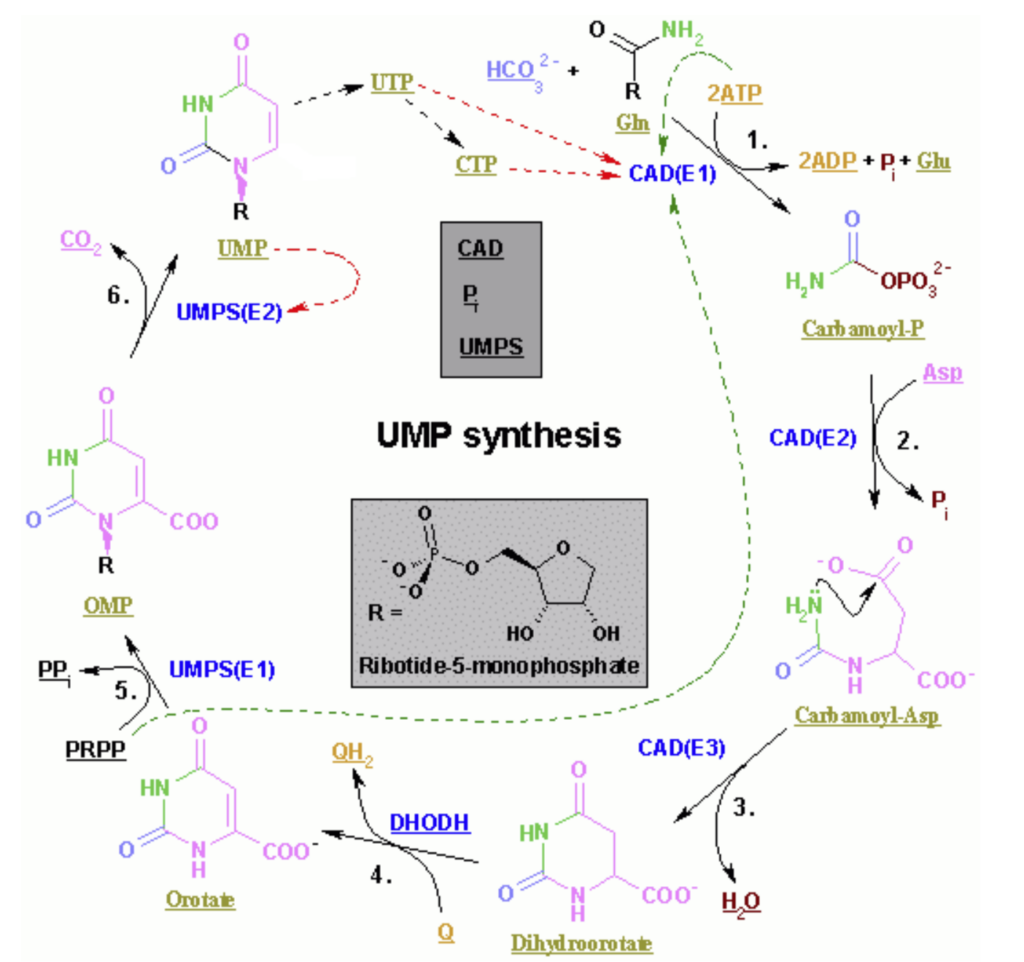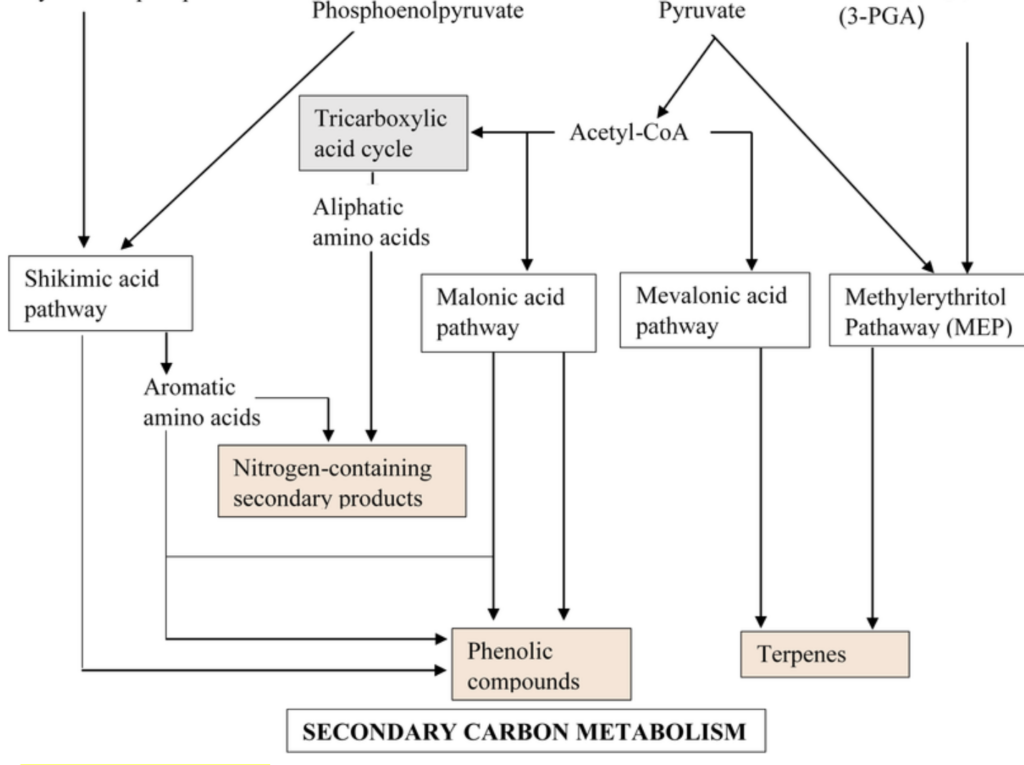
To get further insight in this exciting process it is necessary to understand the underlying processes and steps involved in the process and metabolic pathways. These continue to function as complex map-like structures that dictate how best physical materials can be changed into some of the most important ingredients that are needed in carrying out various life functions.
In addition, in view of nature, it offers us highly efficient molecular factories for it. These are factories designed by evolution with high efficiency, where synthesis of molecules is well coordinated. Studying this kind of molecular factories is essential for an understanding of the fantastic processes that take place in living organisms.
Indeed, this process can be described as one of the most fascinating and enigmatic processes that take place in living organisms, and at the same time, it is an essential process for the existence and functioning of various biological systems. Every link in the biosynthetic process adds complexity to the biological world and stresses the role of synthesis in the biological world and the great construction of living things.

What is biosynthesis?
It is a very vital process in the complexity of living organisms since it defines the processes of developing a complicated chemical compound via the conversion of simpler substances. This remarkable biological function is very crucial for the normal functioning of cells and synthesis of crucial macromolecules that allow growth, repair and survival.
Namely, these macromolecules include proteins, nucleic acids, lipids, and carbohydrates that form the basis of the human body with regard to both functionality and structural framework. The process through which these compounds are synthesized is a complex sequence of enzymatic reactions that are well coordinated in order to achieve order and purpose.
These reactions occur in a well-coordinated manner through the activity of enzymes, and the overall process results in the successful synthesis of molecules that are crucial for the processes of sustaining life. Altogether, biosynthesis can be described as a molecular ballet that takes place in cells to coordinate the flow of chemical reactions needed for the cell maintenance and its evolution, which makes it the most crucial activity in biological processes.
Key Components of Biosynthesis Pathway

A biosynthesis pathway is a series of complex structures with several factors that need to be in place to synthesize specific biomolecules. These include:
- Molecules: If the biosynthesis of a complex molecule is initiated with simple molecules, precursor molecules are the first efficiently functioning molecules towards the structure of this process.
- Enzymes: Proteins that facilitate biochemical reactions acting as chemical catalysts, averting the use up of the substance.
- Energy: ATP and NADPH are the cofactors that supply the energy needed in biosynthesis of macromolecules.
- Biosynthesis Regulation: Cells check the biosynthesis by feedback inhibition, gene expression, and allosteric control to keep balance.
How Does This Process Work?
In the synthesis of tocotrienols the usual processes include some fundamental steps that play important roles in the generation of these compounds. These processes involve enzymes whose roles are to activate to catalyse certain reactions, the use of precursors in the synthesis of the tocotrienol and the managerial roles in metabolic pathways to enable the formation of the required tocotrienol isoforms.
It is important to have a comprehensive knowledge of each stage of this biosynthesis pathway because knowledge of these processes will help to understand the molecular basis of tocotrienol biosynthesis and, potentially, to control these processes for increasing tocotrienol content in different organisms.
- Activation of Precursors: Small molecules are prepared for use in biosynthetic reactions by undergoing some chemical changes.The formation of complex molecules involves activation of precursors so that they fit the biosynthetic process.
- Chain elongation: This involves addition of more monomers to the growing polymer through the action of enzymes.
- Synthesis Process: Such changes that occur after the synthesis process include phosphorylation, glycosylation, or methylation of the final product.
- Transport and Utilization: They are transported intra-cellular to other specific regions or secreted outside the cell for external functions.
Types of Biosynthesis Pathways
There are several biosynthesis pathways, these pathways are specialized to perform synthesis of different macromolecules needed for different cellular functions. These pathways are vital in the synthesis of essential biomolecules that are needed in the biological processes such as replication of DNA, synthesis of proteins as well as energy metabolism.
This is because knowledge of the pros and cons of these pathways and appreciation of their specific roles is helpful in unraveling the mystery that shrouds the general workings of cells and the general development of an organism.Some of the most important include:
1. Protein Biosynthesis
- Synthesizes proteins by using amino acids.
- It includes transcribe (DNA to mRNA) and translate (mRNA to protein).
- Ribosomes and tRNA play essential roles.
2. Lipid Biosynthesis
- Produces fatty acids and complex lipids such as phospholipids and cholesterol.
- Dependent on acetyl-CoA in its synthesis process or needs acetyl-CoA as its initial substrate.
- Essential for membrane formation and energy storage.
3. Carbohydrate Biosynthesis
- CO produces glucose and other essential sugars with the help of processes such as gluconeogenesis.
- A glance at its list of parts reveals that this machine provides energy storage and structural elements.
4. Nucleotide Biosynthesis
- Constructs purines and pyrimidines, essential for DNA and RNA synthesis.
- Uses pyrimidine biosynthesis pathway which is essential for cell division since it forms a part of the DNA molecule.
Understanding

This pathway is an anabolic pathway, which produces pyrimidines hence being referred to as the pyrimidine biosynthesis pathway, and pyrimidines are nucleotides employed in the synthesis of both DNA and RNA. This pathway is an essential one in cellular metabolism as it supplies chemical precursors required for formation of the genetic material.
The pathway involves a sequence of enzymatic reactions where simple precursors are transformed into pyrimidines that are synthesized into the basic units of genes in living organisms. It is important to understand this pathway well in order to determine the detailed molecular processes that underlie several biological processes such as cell division, growth, and development. It follows these key steps:
- Formation of Carbamoyl Phosphate: Catalyzed by carbamoyl phosphate synthetase.
- Formation of Orotate: Orotate is synthesized from carbamoyl phosphate through several enzymatic actions.
- Attachment of Ribose-5-Phosphate: Forms orotidine monophosphate (OMP), a crucial precursor.
- Synthesis of Uridine Monophosphate (UMP): OMP is decarboxylated to provide UMP, which is used as a precursor of other pyrimidine nucleotides.
This pathway is crucial for the duplication of cells and their parts and any deviations in it might have severe implications on the genetic structure of the body.
Importance of Biosynthesis in Medicine and Industry
Biosynthesis is an interesting phenomenon that goes beyond simple biological significance; it has significant implications in medicine, biotechnology, and industry among other fields. Some key applications include:
- Drug Production: Some of the antibiotics as well as therapeutic proteins are synthesized using biosynthetic pathways.
- Agriculture: This phenomenon plays a great role in the synthesis of fertilizers, plant growth regulators and pest-resistant crops.
- Synthetic biology: Scientists design and construct new biological parts and systems to fabricate bio fuels, biodegradable polymers and many chemical products.
Future of Biosynthesis Research
As in any exciting innovative discipline, this phenomenon is getting increasingly popular, thanks to the improvements in synthetic biology and genetic engineering. It is worth to note that current researchers are still looking at the possibility of:
- Enhance metabolic pathways in view of industrial production processes.
- Create new antibiotics and antiviral medications.
- Engineer microbes for environmental sustainability.
Conclusion
This process is considered as the basis of life since it leads to the formation of the necessary molecules integral to the survival of an organism. The complex biosynthesis process and pyrimidine biosynthesis pathway in particular is involved in the cellular process, medicine and biotechnology. Gradually, with the development of research on stem cell applications, these pathways will be controlled and used for the benefit of healing and improving human existence in all aspects such as health care, food production and industries for the creation of a sustainable environment.
This synthesis process is much more than an intellectual endeavor; it is the embodiment of knowledge in the creative process of life. In conclusion, there are a number of potential developments that may be expected from this process n the future. The possibilities are endless! Contact us!
